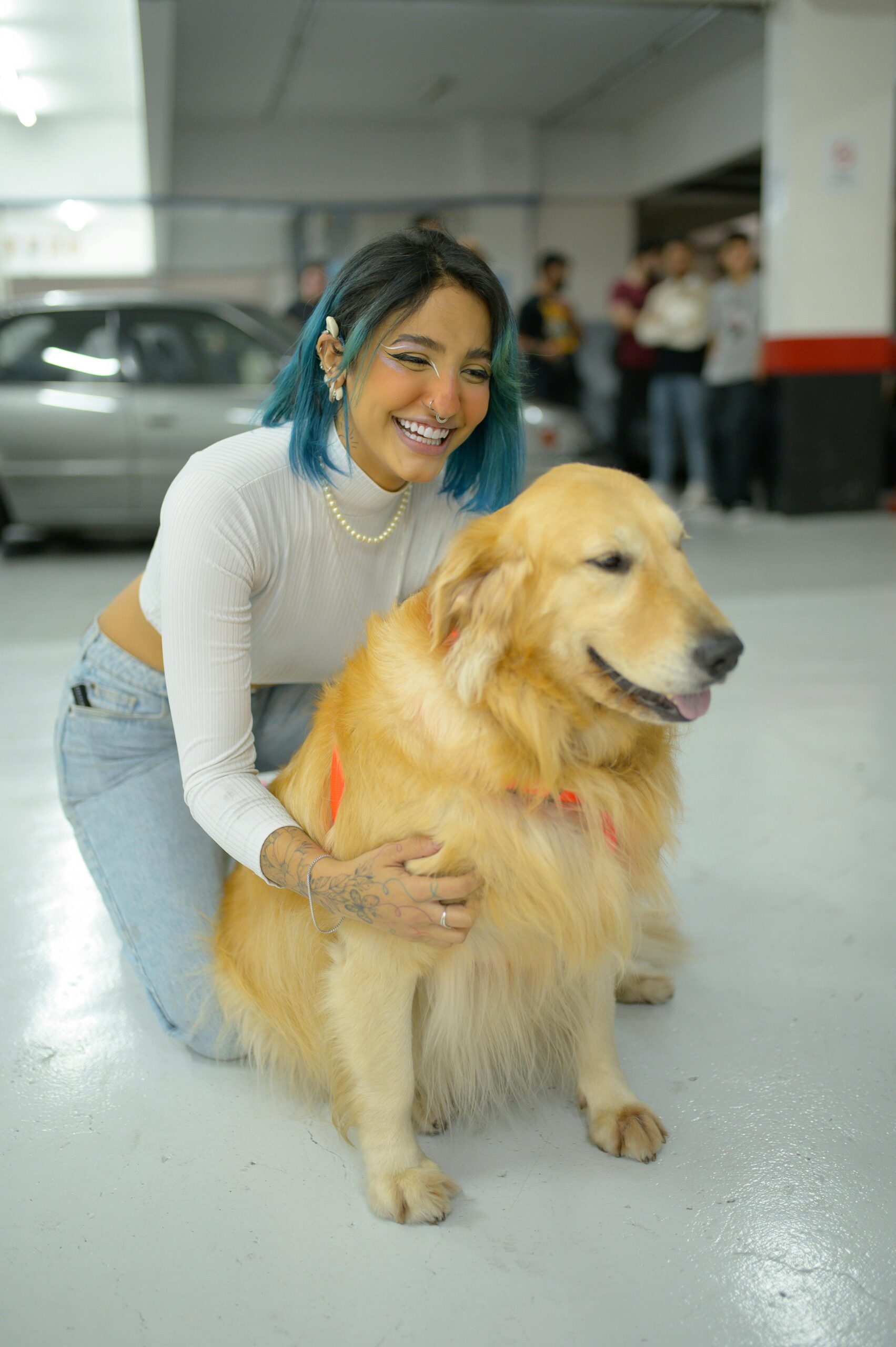Dogs often view nail trimming as one of the scariest parts of their grooming routine. The sound of clippers, the sensation of pressure on their paws, or a past painful experience can make them anxious — and turn nail care into a stressful event for both pet and owner. However, with the right training, patience, and positive reinforcement, your dog can learn to stay calm, relaxed, and even enjoy the process.
In this article, we’ll guide you through how to train your dog to be comfortable with nail trimming, step by step — from understanding why dogs fear it, to using science-based desensitization methods that build lasting trust and cooperation.
I. Understanding Why Nail Trimming Scares Dogs
Before you start training your dog to accept nail trimming, it’s essential to understand why they react negatively in the first place. For many dogs, fear doesn’t come from stubbornness — it comes from instinct and past experiences.
The Sensory Sensitivity Factor
Dogs’ paws are packed with nerve endings, making them extremely sensitive to touch. When a clipper squeezes the nail or when vibration from a grinder is felt, it can trigger a strong, reflexive reaction.
| Cause of Sensitivity | Resulting Behavior | Training Focus |
|---|---|---|
| Pressure on paw pads | Pulling paw away | Gradual desensitization |
| Sound of clipper/snapping | Startling, barking | Sound conditioning |
| Nail vibration (with grinder) | Paw shaking, fear | Positive association |
Past Negative Experiences
If your dog has ever experienced pain or bleeding during a trim, that memory can stay with them. The “quick” — the blood vessel inside the nail — can cause intense pain if accidentally cut.
Dogs quickly associate that pain with the clipper sound, smell, or even the grooming area itself.
Common signs of past trauma include:
- Running away when they see the clippers
- Whining or growling when you touch their paws
- Hiding under furniture before grooming
- Panting or trembling when near the grooming space
Understanding that your dog’s fear is emotional — not defiant — helps you approach training with compassion, patience, and gentle repetition.
Lack of Early Socialization
Dogs that weren’t exposed to paw handling or grooming tools early in life often find nail trimming more intimidating. Puppies that experience gentle paw handling and touch conditioning are far more likely to accept nail care calmly as adults.
According to a 2023 study published in the Journal of Applied Animal Behavior Science, over 68% of adult dogs with grooming anxiety had minimal exposure to nail handling during puppyhood. This shows how critical early positive experiences are in building long-term comfort with grooming routines.
Owner’s Energy and Emotions
Dogs are incredibly perceptive — they can sense your anxiety. If you’re nervous about hurting your dog or rushing through the trim, your tension transfers directly to them.
In fact, behavioral experts often say:
“If your hands shake, your dog’s paws will too.”
Remaining calm, confident, and consistent is one of the most effective ways to reassure your dog that nail trimming is safe.
Physical or Medical Discomfort
Sometimes, resistance during trimming has less to do with behavior and more to do with underlying health issues. Conditions like arthritis, hip dysplasia, or paw pad injuries can make nail handling painful.
Check for:
- Limping or sensitivity when touching paws
- Redness or inflammation between toes
- Thickened or cracked nails
If you notice any of these signs, consult your veterinarian before starting training. Addressing pain is the first step toward successful behavior modification.
The Science Behind Nail-Related Fear
From a psychological perspective, dogs develop classical conditioning toward nail trimming. For instance:
- Clippers (neutral object) → Pain or fear (negative stimulus)
- Over time: Clippers = Fear, even without pain
The goal of training is to reprogram this association through positive reinforcement — replacing fear with reward and comfort.
| Old Association | New Association |
|---|---|
| Clippers = Pain | Clippers = Treats |
| Touching paws = Fear | Touching paws = Praise |
| Nail sound = Startle | Nail sound = Calm reward |
Building Empathy Before Action
Understanding your dog’s emotional experience is the foundation of successful training. Instead of forcing or restraining, think of it as building trust through small victories.
Each calm reaction, each treat, and each successful touch helps your dog learn:
“This isn’t scary — it’s just another way my human cares for me.”
Transition: From Fear to Confidence
Now that you understand why dogs fear nail trimming, the next step is learning how to change that mindset.
In the next section, we’ll explore gradual desensitization and positive reinforcement techniques that teach your dog to remain calm, confident, and cooperative during every trim.
II. Step-by-Step Training: How to Train Your Dog to Be Comfortable with Nail Trimming
Teaching your dog to feel at ease during nail trimming isn’t about force — it’s about trust, patience, and association. Whether you’re working with a skittish rescue dog or a nervous puppy, the goal is to help them gradually build positive experiences with nail care.
Below is a complete, step-by-step guide that blends canine behavior science with proven training techniques to create lasting comfort and cooperation.
Step 1: Create a Calm Environment
Before training even begins, set the stage. Dogs mirror your emotional energy — if you’re tense or in a hurry, they’ll feel it.
Find a quiet, well-lit area away from distractions and loud noises.
Tips for an ideal grooming setup:
- Choose a consistent location (e.g., bathroom, grooming mat, or sofa corner).
- Play soft background music or use dog-calming soundtracks.
- Keep treats, clippers, and a towel within easy reach.
- Avoid slippery floors — place a non-slip mat or towel under your dog.
Tip: Use calming pheromone sprays (like Adaptil) to help reduce anxiety during grooming sessions.
Step 2: Build Positive Associations with the Tools
Your dog needs to learn that grooming tools are not a threat. This step focuses on desensitization — introducing tools gradually, without using them right away.
How to do it:
- Sit beside your dog and show them the nail clippers or grinder.
- Let them sniff and inspect it without pressure.
- Reward them with treats every time they approach the tool calmly.
- Repeat over several sessions until your dog remains relaxed around the tools.
Pro tip:
If your dog is noise-sensitive, turn on the grinder for a few seconds while feeding treats. Repeat this daily so the sound becomes normal, not scary.
| Training Goal | Dog’s Response | Reward Action |
|---|---|---|
| Looks at tool calmly | No flinching | Treat + praise |
| Sniffs or licks tool | Relaxed posture | Extra treat |
| Stays calm during noise | No trembling | Big reward |
Over time, your dog will associate nail clippers with positive outcomes — treats, praise, and attention — not fear.
Step 3: Condition Paw Handling
Many dogs fear nail trimming simply because they don’t like having their paws touched.
That’s why teaching paw tolerance is one of the most important steps in training your dog to be comfortable with nail trimming.
Step-by-step method:
- Start by gently touching your dog’s shoulder and working down to the paw.
- Hold each paw for a second, reward, and release.
- Gradually increase the hold duration — 3 seconds, then 5, then 10.
- Gently press on individual toes without trimming, offering treats each time.
Repeat these exercises daily for a week or two before introducing the clipper.
Behavior expert tip:
“Touch your dog’s paws during playtime or cuddles. When paw handling becomes part of affection, trimming feels less foreign and more routine.”
Step 4: Simulate the Nail Trimming Experience
Once your dog tolerates paw handling, start mock trimming sessions.
This helps them adjust to the sensation and movement before any real cutting happens.
Practice session routine:
- Hold your dog’s paw and tap the clipper gently against the nail.
- Make the clipping sound without cutting and immediately reward calm behavior.
- Gradually move closer to the real action over several days.
| Session Type | Action | Goal |
|---|---|---|
| Simulation | Pretend to clip nails | Build comfort |
| Partial session | Trim one nail only | Avoid overwhelm |
| Full session | Trim all nails calmly | Routine mastery |
If your dog starts showing stress — panting, paw pulling, or whining — pause immediately and go back a step.
Progress, not perfection, is key.
Step 5: Trim One Nail at a Time
When your dog is fully relaxed around the tools, it’s time for real trimming.
But here’s the golden rule: Start small. You don’t have to finish all nails in one session.
- Choose one paw and clip a single nail.
- Reward generously — treat, praise, petting.
- End the session on a positive note, even if it’s just one nail.
- Gradually build up to multiple nails as your dog’s confidence grows.
“One nail a day keeps the fear away.”
— A favorite saying among professional dog trainers.
Step 6: Use the Right Tools and Techniques
Using inappropriate tools can cause pain or uneven trimming, increasing anxiety.
For your dog’s comfort, invest in high-quality, sharp clippers or a gentle nail grinder.
| Tool Type | Best For | Advantages |
|---|---|---|
| Guillotine-style clippers | Small to medium dogs | Precise, quick cuts |
| Scissor-style clippers | Large dogs | Strong, safe leverage |
| Electric grinder | All sizes | Smooth finish, low risk of cutting quick |
Pro Tip:
Trim a tiny bit at a time and avoid the pink quick (the blood vessel inside the nail).
If your dog has dark nails, shine a flashlight beneath them to see the quick more clearly.
Step 7: Reinforce Positivity After Every Session
After trimming, always end with praise, affection, and play.
This final step ensures your dog remembers nail trimming as a positive, bonding experience — not a punishment.
Reward ideas:
- Favorite treat (like cheese or peanut butter)
- A 5-minute play session
- Gentle paw massage with coconut oil (great for cracked pads)
💬 “Consistency turns anxiety into acceptance. Repetition turns acceptance into trust.” — Dr. Sarah Lang, Canine Behaviorist (2024)
Bonus: Combine Trimming with Relaxation Training
Some dogs respond better when trimming becomes part of a calm routine, not a surprise event.
Try pairing it with:
- Evening grooming or brushing time
- Gentle belly rubs
- Calming scents (lavender, chamomile)
This holistic approach creates a positive sensory memory — trimming becomes another soothing part of your dog’s life, not something to fear.
Real-Life Case Study: Milo’s Journey to Calmness
Milo, a 3-year-old rescue beagle, used to hide under the bed at the sight of clippers.
His owner began with daily desensitization sessions — showing clippers, touching paws, rewarding calmness. Within 3 weeks, Milo allowed one nail to be clipped without flinching.
After 2 months, he now sits calmly through full trims, tail wagging, waiting for his favorite treat afterward.
Transition: Maintaining Your Dog’s Confidence
Training your dog to be comfortable with nail trimming doesn’t end once they stop resisting.
In the next section, we’ll explore maintenance strategies, trimming schedules, and how to prevent fear relapse — ensuring your dog’s comfort lasts
Why is my dog afraid of nail trimming?
Most dogs fear nail trimming because of negative past experiences, unfamiliar sounds, or discomfort from being restrained. The key is to build positive associations with grooming tools and use gradual desensitization rather than force.
How long does it take to train a dog to enjoy nail trimming?
It varies by temperament and past experiences. On average, 2–6 weeks of consistent, positive sessions can turn fear into comfort. Rescue dogs or highly anxious pets may take longer, but patience always pays off.
What if my dog won’t let me touch their paws?
Start slow — don’t go straight for the paws. Instead, begin by touching your dog’s shoulders or legs while offering treats. Over time, move closer to the paws. Pair every touch with rewards and praise to create a sense of safety.
Should I use nail clippers or a grinder for anxious dogs?
A nail grinder is often better for anxious or large dogs because it’s smoother and less likely to cause pain. However, always introduce the sound gradually and reward calm reactions before using it for real trimming.
How often should I trim my dog’s nails?
Most dogs need nail trimming every 3–4 weeks, depending on activity level and nail growth rate. Dogs that walk frequently on hard surfaces may need less frequent trims, as natural wear keeps nails shorter.
Can professional groomers help with training?
Absolutely. A certified groomer or fear-free pet professional can help your dog practice calm nail trimming experiences. Many groomers also offer desensitization sessions, which can speed up progress at home.
7. What should I do if I accidentally cut the quick
If you cut too far and cause bleeding, stay calm. Use styptic powder or cornstarch to stop bleeding. Offer comfort and pause trimming for the day — forcing more trimming can undo your progress.
How can I make nail trimming a positive experience long-term?
Consistency is key. Make every trimming session a happy ritual — with treats, praise, or play afterward. Over time, your dog will begin to associate nail trimming with bonding and rewards, not fear.
Are some dog breeds more sensitive to nail trimming than others?
Yes, breeds with thinner nails or sensitive paws (like Greyhounds, Whippets, or small toy breeds) may be more reactive. But with patience and proper technique, every dog can learn to be comfortable with nail trimming.
What if my dog still refuses nail trimming despite training?
If fear persists, consult a veterinary behaviorist. They can rule out pain-related issues and may recommend mild anxiety relief options or professional behavior modification programs to support your dog’s comfort.
Pro Tip:
Regular paw handling, combined with short, frequent trimming sessions, works better than forcing long, stressful grooming days. Your dog’s comfort builds through trust, routine, and love — not speed.




